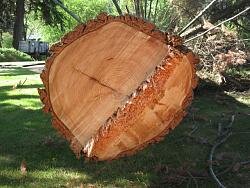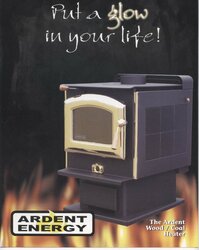And That's exactly what the King does. You were not mislead. You have some unique situation going on. My quess would be on the undersized chimney and uninsulated basement.
I am trying to figure out how the basement insulation falls in this. The basement was warm before the Blaze King stove was installed. I was expecting more heat, not less. One of the absolute joys of this basement is that it was warm in winter, cool and dark in summer. It is part of the living space, heated by my electric furnace. Not really seeing how that somehow has a great big ol`affect on the results here.
Explain? Please.
It was the seller who assured me the stove would work on my chimney, with the 8 to 7 reducer, which they supplied me, for no additional charges (Yeah.TANSTAAFL).
Cheers
Trev
Last edited:




 All that and modest too!
All that and modest too!